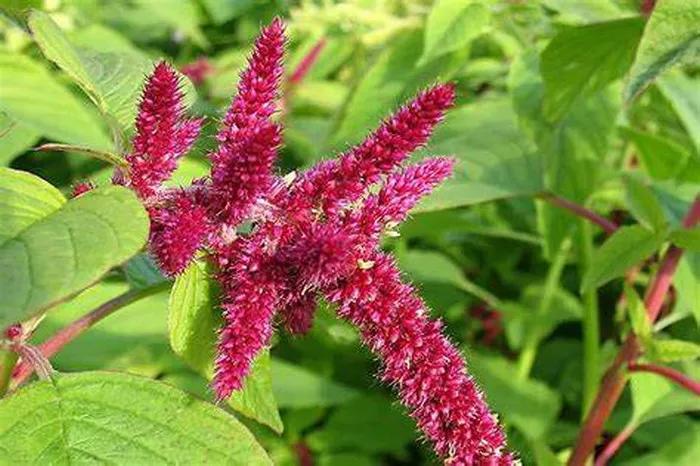In the realm of garden aesthetics, the allure of a vibrant bloom transcends mere color and fragrance; it’s about texture. The delicate dance of unexpected flower spikes and elegant seed heads can transform ordinary floral displays into captivating works of art, enhancing both containers and garden beds alike. Enter amaranth, the distinctive and beloved plant currently captivating the attention of Pinterest users worldwide for its multifaceted charm and effortless cultivation, making it a standout choice for spring gardens.
Amaranth, whose name translates to “unfading flower,” owes its popularity to its unique ability to retain its vibrant hues even when dried, adding a timeless appeal to floral arrangements and providing visual interest throughout the winter and autumn months. Beyond its ornamental value, amaranth boasts a rich culinary and cultural heritage, having served as a traditional staple food in Central America and parts of North America. Despite facing adversity, including a ban by Spanish conquistadors, amaranth has resurged in popularity, thriving both in its native regions and across the globe.
Cultivating Amaranth
The beauty of amaranth lies not only in its aesthetics but also in its ease of cultivation. With a preference for warm climates, this versatile plant flourishes as a summer annual in USDA zones 2 through 11. Providing full sun and well-draining soil with a neutral pH creates an optimal environment for amaranth to thrive, while its tolerance to drought makes it an ideal choice for water-conscious gardeners. Unlike many plants requiring indoor starts, direct sowing is typically recommended for amaranth, with seeds buried half an inch deep and watered generously. It’s crucial to wait until all frost danger has passed before planting, as amaranth is not frost-tolerant. Additionally, the application of nitrogen-rich fertilizer enhances growth and development. Due to its potential for substantial height and large flower panicles, staking is advised to prevent the plant from toppling over. Harvesting for cut flowers is optimal when approximately 75% of the blooms have opened.
Popular Varieties and Applications
Among the plethora of amaranth varieties, love-lies-bleeding (Amaranthus caudatus) stands out as a favorite for both border adornment and cut flower arrangements. Its graceful, drooping flower panicles, notably in vibrant red, make it a versatile choice for floral displays, with cultivars available in an array of hues, including greens, honey browns, and pinks. Beyond their aesthetic appeal, these blooms also attract butterflies and other pollinators, enhancing garden biodiversity.
Joseph’s coat (Amaranthus tricolor) emerges as another sought-after variety for decorative borders, prized for its striking, multicolored foliage reminiscent of a summer poinsettia. Yet, the utility of amaranth extends beyond its visual splendor; certain species, such as Amaranthus cruentus, commonly known as Hopi red dye amaranth, offer additional benefits. With its regal purple foliage and deep red flower panicles, it serves as a dual-purpose plant, ideal for both cut flowers and traditional uses such as dyeing fabrics and coloring piki bread, a cherished culinary tradition.
In the realm of gardening, amaranth emerges not only as a visual delight but also as a testament to resilience, embodying both aesthetic and practical appeal for enthusiasts seeking to elevate their spring gardens. With its effortless cultivation and diverse applications, it’s no wonder amaranth has become the darling of springtime Pinterest boards worldwide.


